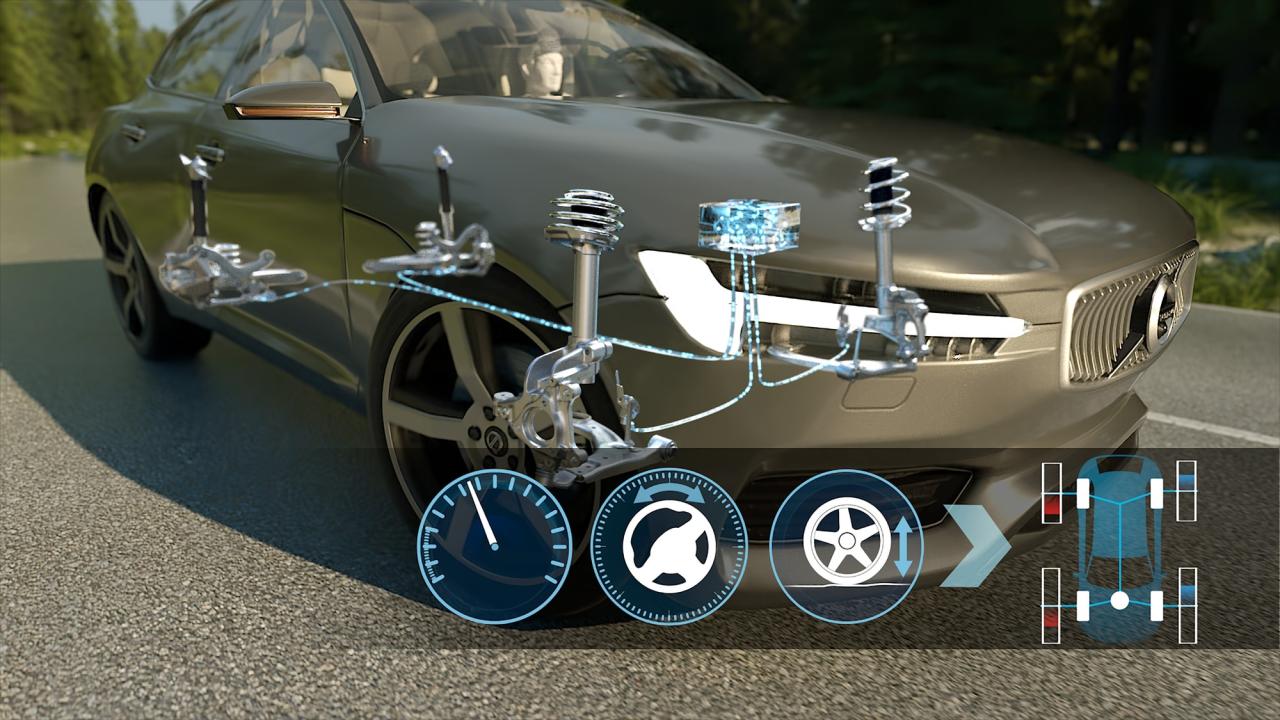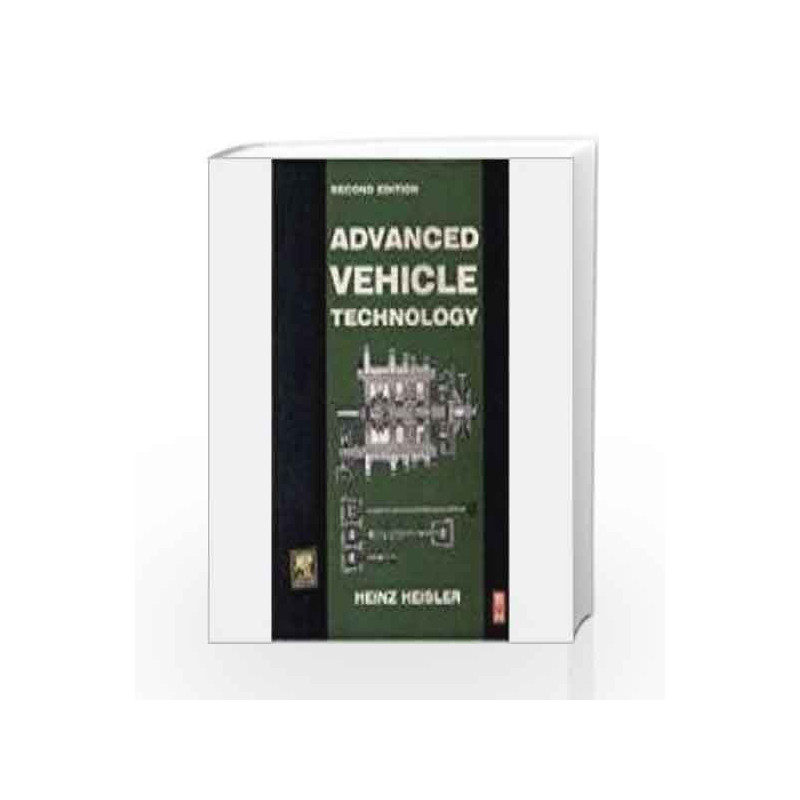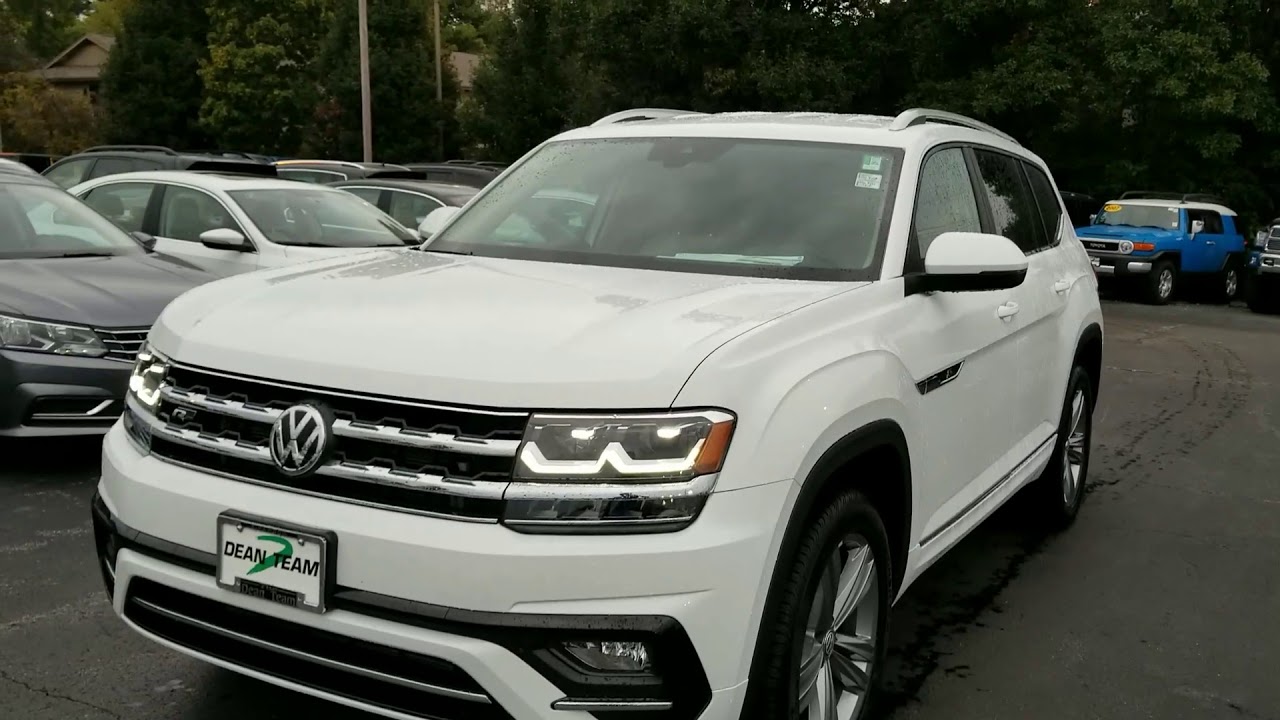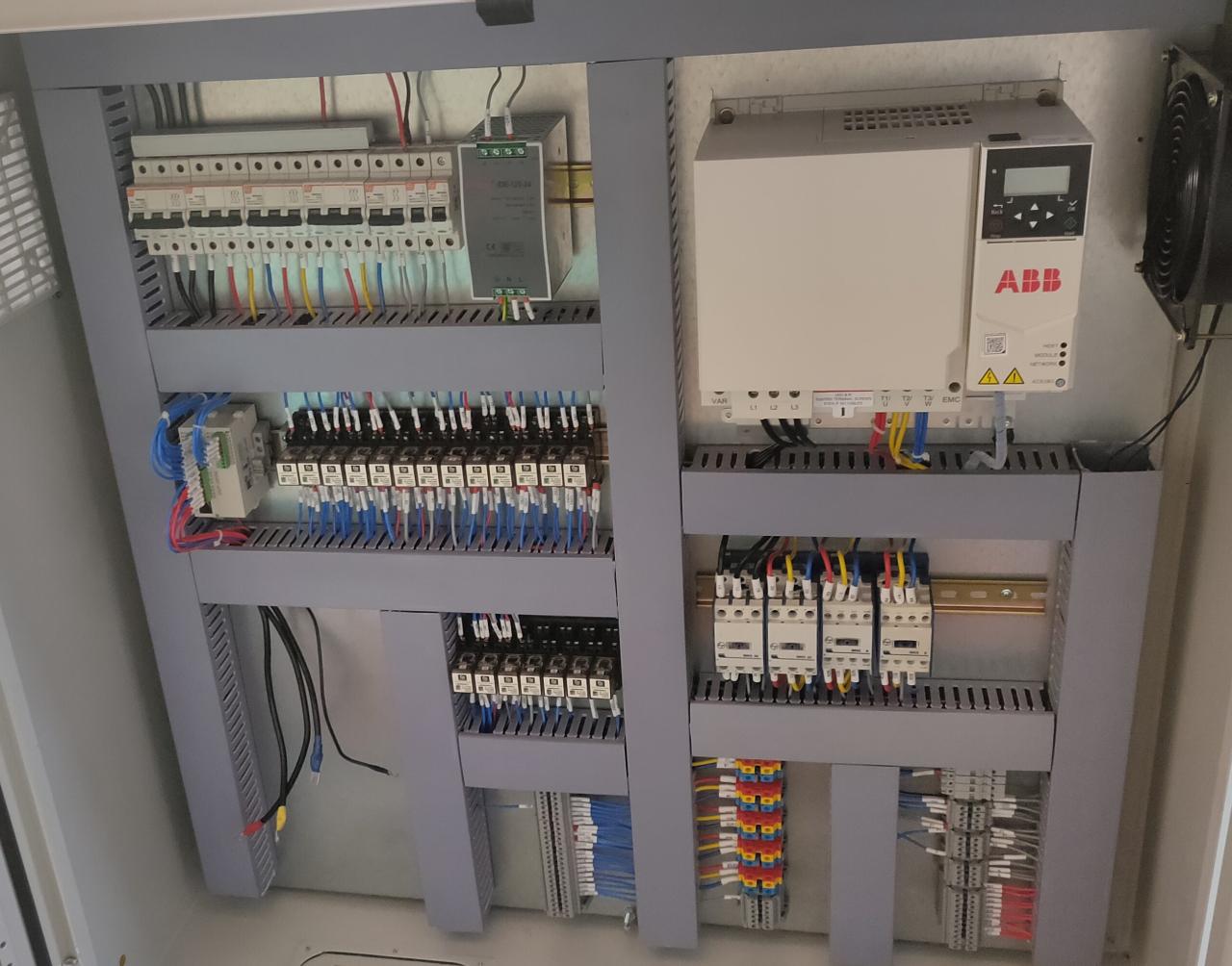Automotive Technology Books: A Guide to Modern Mobility
Automotive technology books provide a fascinating journey into the world of modern mobility, tracing the evolution of the automobile from its humble beginnings to its sophisticated present-day form. These books […]
Automotive technology books provide a fascinating journey into the world of modern mobility, tracing the evolution of the automobile from its humble beginnings to its sophisticated present-day form. These books explore the intricate workings of engines, electronics, and software that power our vehicles, offering insights into the cutting-edge innovations shaping the future of transportation.
From the history of the internal combustion engine to the latest advancements in electric and autonomous vehicles, these books delve into the complexities of automotive technology, making them essential resources for enthusiasts, students, and professionals alike. Whether you’re interested in understanding the principles behind engine design, the role of sensors and actuators, or the impact of software and artificial intelligence on the industry, there’s a book that can illuminate your understanding.
The Evolution of Automotive Technology
The journey of the automobile has been a fascinating blend of innovation, ingenuity, and relentless pursuit of efficiency. From its humble beginnings as a curious contraption to the sophisticated marvels of today, the automotive industry has witnessed a dramatic transformation driven by technological advancements. This evolution has not only reshaped the way we travel but has also had a profound impact on society, shaping our cities, industries, and even our lifestyles.
Early Innovations and the Rise of the Internal Combustion Engine
The invention of the internal combustion engine in the late 19th century marked a pivotal moment in automotive history. This invention, coupled with the development of the first practical automobiles, laid the foundation for the modern automotive industry.
The first automobiles were rudimentary, often powered by steam or electricity. However, the internal combustion engine, with its ability to convert chemical energy into mechanical power, quickly gained prominence.
The first gasoline-powered automobile is credited to Karl Benz in 1886.
Early engines were inefficient and unreliable, but advancements in materials and manufacturing techniques steadily improved their performance. The introduction of the electric starter in 1911 revolutionized the automobile, making it easier to start and operate.
Advancements in Engine Design and Materials
The evolution of the internal combustion engine has been a continuous process of refinement and innovation. Over the years, engineers have focused on improving engine efficiency, power output, and emissions.
- Engine Efficiency: Advancements in engine design, such as the introduction of multi-valve engines, variable valve timing, and turbocharging, have significantly improved fuel efficiency and power output. These innovations have allowed engines to extract more power from a given amount of fuel, leading to improved performance and reduced emissions.
- Materials: The use of lighter and stronger materials, such as aluminum and composites, has reduced engine weight, improving fuel economy and performance.
- Emissions Control: The development of catalytic converters and other emission control technologies has drastically reduced harmful pollutants emitted by internal combustion engines, leading to cleaner air and a more sustainable environment.
The Rise of Alternative Powertrains
While the internal combustion engine has dominated the automotive landscape for over a century, the need for cleaner and more efficient transportation has spurred the development of alternative powertrains.
- Electric Vehicles (EVs): EVs use electric motors powered by batteries, eliminating the need for gasoline or diesel fuel. This offers significant advantages in terms of fuel efficiency, reduced emissions, and lower operating costs. However, challenges remain in terms of battery range and charging infrastructure.
- Hybrid Vehicles: Hybrid vehicles combine an internal combustion engine with an electric motor, providing the best of both worlds. They offer improved fuel efficiency and reduced emissions compared to traditional gasoline vehicles while providing a more familiar driving experience.
- Fuel Cells: Fuel cell technology uses a chemical reaction between hydrogen and oxygen to generate electricity, offering a clean and efficient alternative to traditional engines. While fuel cells hold promise for the future, challenges remain in terms of hydrogen storage and infrastructure.
The Impact of Electronics and Advanced Driver-Assistance Systems (ADAS)
The integration of electronics and computer technology has revolutionized the automotive industry, leading to the development of advanced driver-assistance systems (ADAS) and autonomous vehicles.
- ADAS: ADAS features, such as adaptive cruise control, lane departure warning, and automatic emergency braking, enhance safety and driver comfort. These systems use sensors, cameras, and computer algorithms to monitor the vehicle’s surroundings and assist the driver in various driving situations.
- Autonomous Vehicles: The ultimate goal of autonomous vehicle development is to create cars that can drive themselves without human intervention. This technology relies heavily on advanced sensors, artificial intelligence, and sophisticated software to navigate and make decisions in complex environments.
Modern Automotive Technologies
Modern automobiles are no longer just vehicles for transportation. They have evolved into complex machines that integrate advanced technologies, enhancing safety, efficiency, and driver experience. This evolution is driven by the interplay of sensors, actuators, and sophisticated control systems.
Sensors, Actuators, and Control Systems
Sensors, actuators, and control systems are the foundation of modern automotive technology. They work together to gather information about the vehicle’s environment and internal systems, make decisions, and execute commands to ensure optimal performance and safety.
- Sensors act as the eyes and ears of the vehicle, continuously collecting data about its surroundings and internal functions. This data includes speed, engine temperature, tire pressure, and more. Sensors play a crucial role in providing real-time information to the control systems, enabling them to make informed decisions.
- Actuators are the muscles of the vehicle, translating commands from the control systems into physical actions. They control various components, such as brakes, steering, engine throttle, and transmission. Actuators are responsible for executing the decisions made by the control systems, ensuring the vehicle responds appropriately to changing conditions.
- Control Systems are the brains of the vehicle, responsible for interpreting sensor data, making decisions, and sending commands to actuators. They use complex algorithms and software to manage various aspects of the vehicle’s operation, such as engine management, stability control, and braking systems.
Types of Sensors in Automobiles
Sensors are essential for modern vehicles, providing crucial information for various systems. The following table showcases different types of sensors commonly found in automobiles and their respective functions:
| Sensor Type | Function |
|---|---|
| Speed Sensor | Measures vehicle speed |
| Engine Temperature Sensor | Monitors engine coolant temperature |
| Tire Pressure Sensor | Detects tire pressure variations |
| Oxygen Sensor | Measures oxygen levels in exhaust gases |
| Airflow Sensor | Measures air intake volume |
| Steering Angle Sensor | Measures steering wheel angle |
| Accelerometer | Detects vehicle acceleration and deceleration |
| Gyroscope | Measures vehicle rotation and yaw rate |
| Rain Sensor | Detects rain intensity |
| Light Sensor | Detects ambient light levels |
Advanced Driver-Assistance Systems (ADAS), Automotive technology books
ADAS are a suite of technologies designed to assist drivers in various aspects of driving, enhancing safety and convenience. These systems use sensors, actuators, and control systems to monitor the vehicle’s surroundings and provide warnings or take corrective actions to prevent accidents or improve driving comfort.
- Adaptive Cruise Control (ACC): ACC automatically adjusts the vehicle’s speed to maintain a safe distance from the vehicle ahead. Using sensors, ACC can detect the speed and distance of the vehicle in front and automatically accelerate or brake to maintain the desired following distance. This feature reduces driver fatigue and improves safety by minimizing the risk of rear-end collisions.
- Lane Departure Warning (LDW): LDW monitors the vehicle’s position within its lane using cameras or sensors. If the vehicle begins to drift out of its lane, LDW issues an alert to the driver, such as a visual warning or a gentle steering wheel vibration. LDW helps prevent accidents by alerting drivers to unintentional lane changes and encouraging them to stay within their lane.
- Automatic Emergency Braking (AEB): AEB uses sensors to detect potential collisions and automatically applies the brakes if the driver fails to react. AEB can significantly reduce the severity of accidents or even prevent them altogether by automatically braking when a collision is imminent. AEB is particularly effective in situations where the driver is distracted or unable to react quickly enough.
- Blind Spot Monitoring (BSM): BSM uses sensors to detect vehicles in the driver’s blind spots, alerting the driver with visual or auditory warnings. This feature helps prevent accidents by alerting drivers to vehicles that may be hidden from their view, reducing the risk of lane changes or merging into traffic. BSM is especially helpful in situations where visibility is limited, such as when changing lanes or merging onto highways.
Autonomous Driving Technology
Autonomous driving technology, also known as self-driving technology, is the next frontier in automotive innovation. This technology aims to automate the driving process, allowing vehicles to navigate roads and make decisions without human intervention.
- Levels of Automation: Autonomous driving technology is categorized into different levels of automation, ranging from Level 0 (no automation) to Level 5 (full automation). Level 0 vehicles require the driver to perform all driving tasks, while Level 5 vehicles are fully automated and require no human input.
- Sensors and Data Processing: Autonomous vehicles rely heavily on sensors, such as cameras, radar, lidar, and ultrasonic sensors, to perceive their surroundings. These sensors collect data about the environment, including road conditions, traffic signals, pedestrians, and other vehicles. This data is then processed by powerful computers using advanced algorithms to create a comprehensive understanding of the vehicle’s surroundings and make driving decisions.
- Impact on Safety and Convenience: Autonomous driving technology has the potential to revolutionize transportation, improving safety and convenience. By eliminating human error, autonomous vehicles could significantly reduce the number of traffic accidents. Additionally, autonomous driving technology could free up drivers’ time, allowing them to focus on other activities while traveling.
Automotive Electronics and Software: Automotive Technology Books
The rise of electronics and software has fundamentally reshaped the automotive industry, transforming vehicles from simple mechanical contraptions into complex, interconnected systems. Embedded systems and software now play a crucial role in virtually every aspect of vehicle operation, from engine management and safety features to infotainment and driver assistance.
The Growing Importance of Embedded Systems and Software
Embedded systems, which are specialized computer systems designed for specific tasks, are integral to modern vehicles. These systems control various functions, including:
- Engine control: Engine control units (ECUs) manage fuel injection, ignition timing, and emissions control, optimizing performance and fuel efficiency.
- Transmission control: Electronic transmission control systems adjust gear ratios for optimal driving conditions.
- Safety systems: Advanced driver-assistance systems (ADAS) rely on sensors, actuators, and software to provide features like lane departure warning, adaptive cruise control, and automatic emergency braking.
- Infotainment and connectivity: Vehicles are increasingly equipped with touchscreen interfaces, navigation systems, and smartphone integration, all powered by software.
Software plays a critical role in these systems, defining their functionality, performance, and safety. The complexity of modern vehicles demands sophisticated software architectures, which are constantly evolving to incorporate new features and enhance existing capabilities.
Cybersecurity Challenges and Opportunities in Connected Vehicles
The increasing connectivity of vehicles presents both opportunities and challenges in terms of cybersecurity. While connected vehicles offer numerous benefits, such as remote diagnostics, over-the-air updates, and advanced safety features, they also create new vulnerabilities that hackers can exploit.
- Data breaches: Hackers could potentially gain access to sensitive vehicle data, such as driver information, location, and driving habits.
- Remote vehicle control: In extreme cases, hackers could remotely control vehicle functions, compromising safety and potentially leading to accidents.
- Denial of service attacks: Hackers could disrupt vehicle operations by disabling essential systems or features.
Addressing these cybersecurity concerns is paramount. Automakers and technology companies are investing heavily in cybersecurity research and development to enhance vehicle security and protect against cyber threats. Examples of these efforts include:
- Developing secure communication protocols: Enhancing the security of data transmission between vehicles and external systems.
- Implementing intrusion detection and prevention systems: Monitoring vehicle networks for suspicious activity and blocking unauthorized access.
- Regular software updates: Patching vulnerabilities and enhancing security measures.
Software Updates and Over-the-Air (OTA) Technology
Software updates are essential for maintaining vehicle functionality, performance, and security. Traditional methods of updating vehicle software required physical visits to dealerships, but over-the-air (OTA) technology is revolutionizing the process. OTA updates allow automakers to deliver software updates wirelessly to vehicles, enabling:
- Enhanced convenience: Owners can update their vehicles remotely without visiting a dealership.
- Improved efficiency: OTA updates can be delivered quickly and efficiently to a large number of vehicles.
- Continuous improvement: Automakers can release updates to address bugs, improve performance, and introduce new features regularly.
OTA technology is transforming the automotive landscape, enabling automakers to provide a more seamless and personalized ownership experience. For example, Tesla regularly releases OTA updates that introduce new features, enhance performance, and address safety concerns. These updates have become a defining characteristic of the Tesla brand, showcasing the power of software in shaping the future of mobility.
Future Trends in Automotive Technology
The automotive industry is on the cusp of a revolutionary transformation, driven by the convergence of artificial intelligence (AI), machine learning (ML), and the Internet of Things (IoT). These technologies are poised to reshape the way vehicles are designed, manufactured, and used, ushering in an era of connected, autonomous, and sustainable mobility.
The Rise of Artificial Intelligence and Machine Learning
AI and ML are playing an increasingly crucial role in the automotive industry, enhancing vehicle performance, safety, and driver experience.
- Advanced Driver-Assistance Systems (ADAS): AI-powered ADAS features, such as adaptive cruise control, lane departure warning, and automatic emergency braking, are becoming increasingly sophisticated, contributing to enhanced safety and driver convenience.
- Autonomous Driving: AI is at the heart of autonomous driving technology, enabling vehicles to perceive their surroundings, make decisions, and navigate without human intervention. Self-driving cars are expected to revolutionize transportation, reducing accidents, improving traffic flow, and providing mobility for individuals with disabilities.
- Predictive Maintenance: AI algorithms can analyze data from sensors and vehicle systems to predict potential failures, enabling proactive maintenance and reducing downtime. This helps optimize vehicle performance and minimize maintenance costs.
- Personalized Driving Experiences: AI can personalize the driving experience by learning driver preferences, adapting to individual driving styles, and providing customized recommendations for navigation, entertainment, and vehicle settings.
The Internet of Things in Automotive
The IoT connects vehicles to the internet and other devices, enabling real-time data exchange and creating new opportunities for connectivity, safety, and efficiency.
- Connected Car Features: Connected cars offer a range of features, including remote vehicle control, real-time traffic information, navigation, and entertainment services. This enhances the driving experience and provides drivers with valuable information and services.
- Vehicle-to-Vehicle (V2V) Communication: V2V communication enables vehicles to exchange data, such as speed, location, and braking information, improving safety by allowing vehicles to anticipate potential hazards and react accordingly.
- Vehicle-to-Infrastructure (V2I) Communication: V2I communication allows vehicles to interact with traffic signals, road signs, and other infrastructure elements, optimizing traffic flow and enhancing safety.
- Fleet Management: The IoT enables real-time monitoring and management of vehicle fleets, optimizing routes, scheduling maintenance, and improving fuel efficiency.
Future Developments in Automotive Technology
The automotive industry is continuously evolving, with significant advancements expected in the coming years. Here is a timeline outlining potential future developments:
- Electric Vehicles (EVs): The adoption of EVs is expected to accelerate, driven by government incentives, falling battery costs, and increasing consumer demand.
- 2025: Mass adoption of EVs with longer range, faster charging times, and improved battery performance.
- 2030: Solid-state batteries with higher energy density and longer lifespan become commercially available.
- 2035: EVs become the dominant vehicle type in major markets.
- Autonomous Driving: Autonomous driving technology is expected to advance rapidly, leading to the deployment of fully autonomous vehicles in specific applications.
- 2025: Level 3 autonomous driving systems become widely available, allowing for hands-free driving in certain conditions.
- 2030: Level 4 autonomous vehicles are deployed in specific geographies and applications, such as ride-hailing services and commercial trucking.
- 2035: Level 5 autonomous vehicles, capable of driving in all conditions without human intervention, become commercially available in select markets.
- Connected Car Technologies: Connected car technologies will continue to evolve, offering more sophisticated features and services.
- 2025: Advanced V2V and V2I communication systems become commonplace, enhancing safety and traffic flow.
- 2030: Vehicles become integrated with smart cities and other infrastructure, providing seamless mobility and access to services.
- 2035: Connected car technologies become ubiquitous, enabling a range of personalized services and experiences.
Impact of Future Trends on the Automotive Industry
The convergence of AI, ML, and the IoT is poised to have a profound impact on the automotive industry, affecting manufacturing, design, and consumer behavior.
- Manufacturing: Automation and robotics will play a more significant role in manufacturing, leading to increased efficiency, reduced production costs, and enhanced quality control.
- Design: Vehicles will be designed with a focus on connectivity, autonomy, and sustainability. Interior design will prioritize comfort, convenience, and entertainment, while exterior design will emphasize aerodynamic efficiency and safety.
- Consumer Behavior: Consumers will increasingly value connected and autonomous features, as well as sustainable transportation options. The ownership model may shift towards mobility services and subscription models.
Key Automotive Technology Books
The automotive industry has witnessed a remarkable evolution, fueled by technological advancements that have shaped the vehicles we drive today. Understanding the intricacies of automotive technology is crucial for professionals, enthusiasts, and anyone seeking to delve into the world of automobiles. Numerous books have emerged as valuable resources, offering insights into various aspects of this ever-evolving field.
Key Automotive Technology Books
These books delve into various aspects of automotive technology, providing comprehensive knowledge for professionals, enthusiasts, and students.
- “Automotive Technology: Principles, Diagnosis, and Service” by James D. Halderman: This widely acclaimed textbook provides a comprehensive overview of automotive technology, covering engine systems, electrical systems, transmissions, and more. It’s an ideal resource for students and professionals seeking a foundational understanding of automotive principles and repair procedures.
- “Engine Management Systems” by Greg Banish: This book focuses on the complex world of engine management systems, exploring fuel injection, ignition, emissions control, and diagnostics. It’s a valuable resource for automotive technicians, engineers, and anyone interested in the intricate workings of modern engines.
- “Automotive Electronics Handbook” by Robert Bosch GmbH: A comprehensive guide to automotive electronics, this book covers various components, circuits, and systems, including sensors, actuators, and control units. It’s a valuable resource for engineers, technicians, and anyone seeking a deep understanding of automotive electronics.
- “Autonomous Vehicles: Technology, Regulation, and Policy” by David Mindell: This book explores the rapidly developing field of autonomous driving, discussing the technology, regulations, and ethical considerations surrounding self-driving vehicles. It’s an essential read for anyone interested in the future of transportation.
- “The Lean Startup” by Eric Ries: While not strictly an automotive technology book, this book’s principles of rapid prototyping, customer feedback, and iterative development are highly relevant to the automotive industry. It’s a valuable resource for entrepreneurs and innovators looking to disrupt the automotive landscape.
End of Discussion
In conclusion, automotive technology books offer a comprehensive and engaging exploration of the ever-evolving world of automobiles. They provide valuable insights into the past, present, and future of this dynamic industry, showcasing the remarkable ingenuity and innovation that drives its progress. Whether you’re a seasoned mechanic, a curious student, or simply a car enthusiast, these books offer a wealth of knowledge and inspiration, inviting you to delve deeper into the fascinating realm of automotive technology.
Automotive technology books can be fascinating, offering a glimpse into the intricate world of engines, transmissions, and electronics. While delving into the complexities of automotive systems, it’s refreshing to take a break and enjoy the sleek design and powerful sound of the jarre technologies aerobull hd.
This innovative speaker, with its futuristic design and impressive audio quality, offers a welcome contrast to the technical jargon often found in automotive technology books.










